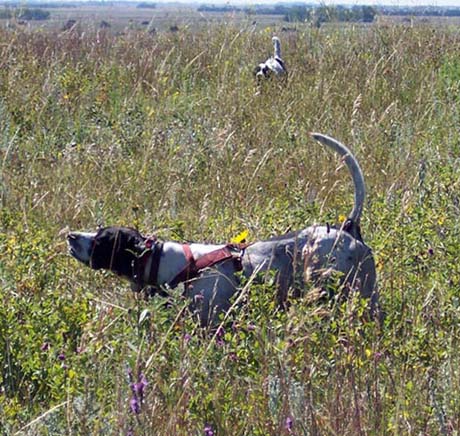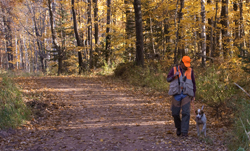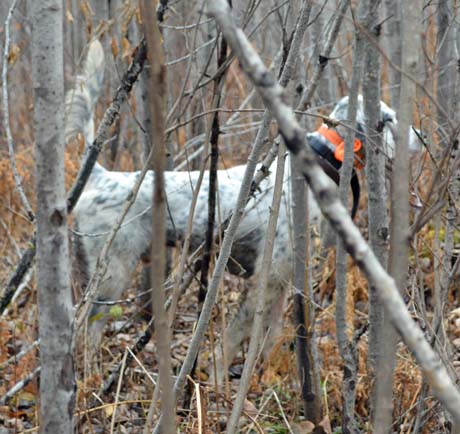The tail of a bird dog

These two dogs–a pointer and a setter–have 14 championships and runner-up championships between them in horseback and cover dog venues.
Much attention—too much, in my opinion—is focused on the tail of a bird dog. I refer not to what the tail indicates about a dog’s thoughts or emotions but rather how the tail looks when a dog is on point and, in particular, how straight and vertical it is.
“Poker straight,” “I like a straight stick” or “My dog points with a 12 o’clock tail” are familiar phrases used by those fixated on tails. Usually, they are inexperienced or demand little of their dogs. I recently spoke with a successful handler of horseback shooting dogs about a prospect. In our entire conversation, he never once asked how the dog’s tail looked on point.
In my experience, when bird dogs are used to pursue wild birds, whether in the open, the grouse woods or the southern piney woods, birds are rarely plentiful. In addition, the terrain can be rugged and the conditions tough. Most of the dog’s time is spent in the search for game. In these places it’s not the tail that finds birds.

On a dark, damp day in October, the pointer lead my guiding clients and me from grouse to grouse to grouse.
Instead, what finds birds is:
1) intelligence combined with experience that chooses the most likely places;
2) an efficient gait that allows the search to continue over long periods of time through punishing cover and circumstances;
3) a superb nose that draws the dog towards the faintest scent of birds and allows it to locate and point accurately.
Finally, at the conclusion of all that work and for a brief time, I see the dog on point. I notice its posture, intensity and focus on bird location. And, oh yeah, I look at the tail. Very often and especially under trying field conditions, the tail isn’t “poker straight” or “12 o’clock.”
And it doesn’t have to be. The tail needs to be good enough so it doesn’t detract from the essential qualities that brought the dog to that place. On the other hand, if the dog has the intelligence, the gait, the nose and a beautiful tail, then that’s like the cherry on an ice cream sundae.





